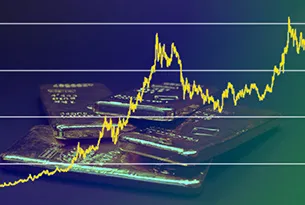Those who trade currency options must develop a solid understanding of the Greeks—like Delta, Vega, Gamma, and Theta—in order to more accurately measure option risk. Here are key points on each, says Jean Folger of Investopedia.com.
Investors and traders interested in the foreign exchange market have a variety of products from which to choose. Options, which are typically associated with the stock market, can also be applied to the forex market. This article will briefly explain what forex options are and provide an introduction as to how the various Greeks are used to determine risk and evaluate options positions.
Forex options provide exposure to rate movements in some of the most widely traded currencies, using the same techniques that investors use for equity and index options.
Like other options, forex options are used by traders to limit risk and increase profit potential. Traders can choose between traditional call/put options, or single payment option trading (SPOT).
Traditional options give the buyer the right, but not the obligation to purchase an option from a seller at a predetermined price and time. Traditional options generally have lower premiums than SPOT options. SPOT options allow traders to guess price activity for a specified date in the future; if the trader is correct, he or she will receive a cash payout. Both traditional and SPOT options incur a premium, the total cost of the option.
One of the fundamental analysis techniques used in options trading, be it for stocks, futures, or forex, is the option Greeks: Measurements of the risk involved in an options contract with regard to certain underlying variables.
Delta: Sensitivity to Underlying's Price
Delta, the most popular option Greek, measures an option's price sensitivity relative to changes in its underlying asset's price and is the number of points that an option's price is expected to move for each one-point change in the underlying market.
Delta is important because it provides an indication of how the option's value will change with respect to price fluctuations in the underlying instrument, assuming all other variables remain the same.
Delta is typically shown as a numerical value between 0.0 and 1.0 for call options and 0.0 and -1.0 for put options.
In other words, option Delta will always be positive for calls and negative for puts. It should be noted that Delta values can also be represented as whole numbers between 0.0 and 100 for call options and 0.0 to -100 for put options, rather than using decimals. Call options that are out-of-the-money will have Delta values approaching 0.0; in-the-money call options will have Delta values that are close to 1.0.
Vega: Sensitivity to Underlying's Volatility
Volatility is a measurement of the amount and speed with which price moves up and down and is frequently based on changes in the (recent) highest and lowest historical prices in a trading instrument, such as a currency pair.
Vega, the only Greek that is not represented by a Greek letter, measures an option's sensitivity to changes in the volatility of the underlying asset. Vega represents the amount that an option's price changes in response to a 1% change in volatility of the underlying market. The more time that there is until expiration, the more impact increased volatility will have on the option's price.
Because increased volatility implies that the underlying instrument is more likely to experience extreme values, a rise in volatility will correspondingly increase the value of an option, and, conversely, a decrease in volatility will negatively affect the value of the option.
NEXT: How to Read Gamma and Theta on Currency Options
|pagebreak|Gamma: Sensitivity to Delta
Gamma measures the sensitivity of Delta in response to price changes in the underlying instrument. Gamma indicates how Delta will change relative to each 1% price change in the underlying. Since Delta values change at different rates, Gamma is used to measure and analyze Delta. Gamma is used to determine how stable an option's Delta is; higher Gamma values indicate that Delta could change dramatically in response to even small movements in the underlying's price.
Gamma increases as options become in-the-money and decreases as options become in- or out-of-the-money. Gamma values are generally smaller the farther away the date of expiration; options with longer expirations are less sensitive to changes in Delta. As expiration approaches, Gamma values are typically larger as Delta changes have more impact.
Theta: Sensitivity to Time Decay
Theta measures the time decay of an option, the theoretical dollar amount that an option loses every day as time passes, assuming there are no changes in either the price or volatility of the underlying.
Theta increases when options are at-the-money and decreases when options are in- and out-of-the-money. Long calls and long puts will usually have negative Theta; short calls and short puts will have positive Theta. By comparison, an instrument whose value is not eroded by time—such as a stock—would have zero theta.
The value of an option can be expressed as its intrinsic value and time value. The intrinsic value represents the dollar value gained if the option were exercised immediately: it is the difference between the strike price of the option and the actual underlying's price. An option's time value, on the other hand, is a function of the time remaining until expiration and how close the option's strike price is to underlying's price. The time decay that theta represents is not constant; the rate increases as expiration nears.
Using the Greeks in Forex Options Strategies
Similarly to stock options, forex options can be used to either make money or reduce risk in existing positions. Options provide a means to enter the foreign exchange market with limited risk, as losses are typically limited to the amount of money that is paid for the premium. The upside potential can be far greater than any loss of premium, making for favorable risk/reward ratio.
Forex options are also used to hedge against existing foreign exchange positions. Because forex options give the holder the right-but not the obligation-to buy or sell the currency pair at a specific exchange rate and time in the future, they can be employed to protect against potential losses in existing positions.
Whether a trader is long or short a foreign currency pair, forex options can be used to protect the trader from risk, while giving the existing position room to move without getting stopped out.
The Bottom Line
The Greeks are an important tool for all options traders and can be helpful in identifying and avoiding risk in individual options positions or in options portfolios. The Greeks can be applied in complex strategies involving mathematical modeling, generally using software that is available through trading platforms or proprietary vendors.
Alternatively, forex options traders may use just one or two of the Greeks to confirm investing decisions.
Because of their complexity, the Greeks demand patience and practice in order to fully realize their potential as part of an overall options strategy. Using the Greeks for any type of options analysis can help traders determine an option's sensitivity to price and volatility changes, and to the passage of time.
By Jean Folger, contributor, Investopedia.com



































